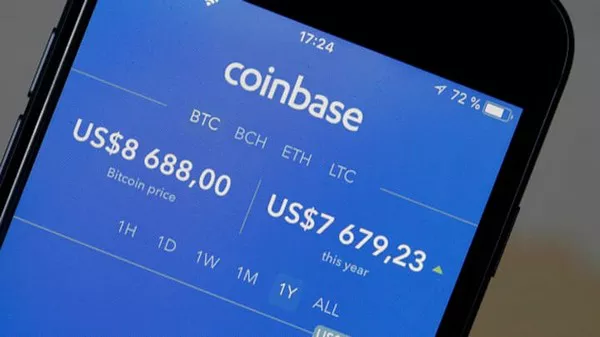Cryptocurrency has become a mainstream financial asset, with exchanges like Coinbase playing a crucial role in allowing users to buy, sell, and manage digital assets. With the rise of these platforms, the need for secure and efficient methods to link bank accounts has grown significantly. One tool that has gained popularity for linking bank accounts to cryptocurrency exchanges is Plaid.
Plaid is widely used to facilitate smooth connections between users’ bank accounts and services like Coinbase, enabling quick and secure transactions. However, with increased usage, questions arise about the safety and security of using Plaid on platforms like Coinbase. In this article, we’ll explore how safe Plaid is on Coinbase, covering its functionality, security protocols, and whether users should feel comfortable using it to connect their bank accounts.
What is Plaid?
Plaid is a financial technology company that provides an interface between your bank account and various financial applications. Plaid works as an intermediary that securely links your bank account to apps like Coinbase, Venmo, Robinhood, and many others. It allows users to authenticate their bank accounts for transactions or financial data sharing in a seamless and secure manner.
When you use Plaid, you provide your banking credentials, which Plaid uses to access your financial information and verify the link between your bank account and the financial app. However, Plaid never stores your login credentials or passwords. Its primary function is to establish a connection and ensure that transactions are authorized securely.
Why is Plaid Used on Coinbase?
Coinbase is one of the largest and most trusted cryptocurrency exchanges in the world. For users to buy and sell cryptocurrency, they often need to link their bank accounts to their Coinbase account. Plaid is used on Coinbase to make this process faster and more secure. By integrating with Plaid, Coinbase can verify the legitimacy of bank accounts and ensure that users can initiate transactions without manually entering bank details.
Plaid simplifies the verification process by connecting directly to your bank, bypassing the need for long, manual processes of account verification through traditional means like small deposit amounts.
How Plaid Works on Coinbase
The integration between Plaid and Coinbase is designed to be user-friendly. Here’s how the process works:
Linking Your Bank Account: When you sign up for Coinbase or want to add a new payment method, you are prompted to connect your bank account. You can select Plaid as the verification method.
Bank Account Verification: Once you select Plaid, it opens a secure window where you enter your bank’s login credentials. Plaid communicates with your bank to verify the account, but it does not store or share your login information.
Transaction Authorization: After your account is verified, Plaid authorizes the connection between Coinbase and your bank account, allowing for seamless transfers between the two platforms.
By using Plaid, Coinbase eliminates the need for users to manually input their banking information, and the verification process becomes much quicker.
Security Features of Plaid
Now that we understand how Plaid works, let’s dive into the security features that make it a trustworthy option for linking bank accounts to Coinbase. Here are the key factors that contribute to the safety of Plaid:
1. End-to-End Encryption
End-to-end encryption is one of the strongest security protocols Plaid employs. This means that any data transmitted between your bank and Coinbase through Plaid is fully encrypted. Hackers or malicious actors cannot intercept the data or access sensitive information during the verification process.
Plaid uses advanced encryption methods like AES-256, which is widely regarded as one of the most secure encryption standards in the world. This ensures that your banking credentials and financial data are protected from unauthorized access.
2. Tokenization of Data
Another critical security feature of Plaid is tokenization. When Plaid accesses your bank account information, it replaces sensitive data with a secure token. This token is used to authorize transactions, but it does not reveal any of your actual banking information.
Even if someone were to intercept the data, they would not gain access to your bank login details or personal information, as they would only see the token, which is meaningless outside the verification process.
3. No Storage of Banking Credentials
One of the most common concerns for users is whether Plaid stores their banking credentials. The answer is no. Plaid does not store your bank login information or password. Once your account is verified, Plaid removes your credentials from its systems.
This means that even in the unlikely event of a data breach, there would be no stored bank credentials for hackers to exploit. Your bank account details remain secure and inaccessible.
4. Multi-Factor Authentication (MFA)
Plaid also employs multi-factor authentication (MFA) to enhance security. When you enter your bank login credentials, Plaid may require additional verification, such as a one-time password (OTP) or verification through your bank’s mobile app. This additional layer of security ensures that even if someone obtains your login credentials, they cannot access your account without the second form of authentication.
5. Secure APIs
Plaid operates through secure APIs (Application Programming Interfaces), which are specifically designed to protect data transmission between different platforms. Plaid’s APIs are rigorously tested and comply with strict security standards. This ensures that data transferred between your bank, Plaid, and Coinbase is secure and cannot be tampered with.
6. Strict Compliance with Data Regulations
Plaid adheres to strict regulatory standards regarding data protection and financial transactions. It complies with data privacy regulations such as the General Data Protection Regulation (GDPR) in Europe and the California Consumer Privacy Act (CCPA) in the U.S.
These regulations are in place to ensure that companies like Plaid handle user data responsibly and with the utmost care. Compliance with these laws demonstrates Plaid’s commitment to protecting user privacy and security.
How Safe is Plaid on Coinbase?
Given the comprehensive security measures Plaid employs, it is generally considered very safe to use on Coinbase. The combination of encryption, tokenization, MFA, and compliance with regulatory standards makes Plaid one of the most secure ways to link your bank account to financial platforms like Coinbase.
However, it’s essential to understand that while Plaid provides significant security, there are always risks when using any financial technology platform. Let’s explore the potential risks and how to mitigate them.
Potential Risks of Using Plaid
While Plaid is designed to be secure, no system is entirely risk-free. Here are some potential risks to consider:
1. Phishing Attacks
One of the primary risks in using Plaid is the possibility of phishing attacks. Phishing occurs when attackers trick users into providing their banking information by posing as legitimate services. Users must be cautious when entering their bank credentials to ensure they are using Plaid through official channels like Coinbase.
To avoid phishing attacks, users should always check the URL and ensure they are on the correct website before entering any sensitive information. Plaid and Coinbase will never ask for your credentials via email or text message.
2. Third-Party Vulnerabilities
While Plaid itself is highly secure, vulnerabilities can arise from third-party platforms, including Coinbase. If a user’s Coinbase account is compromised, attackers could potentially initiate unauthorized transactions. It is crucial to use strong passwords and enable two-factor authentication (2FA) on both Coinbase and any linked accounts.
3. Data Breaches
Although Plaid does not store banking credentials, it does handle sensitive financial data during the verification process. In the unlikely event of a data breach, attackers could potentially access some financial information. However, Plaid’s encryption and tokenization methods significantly reduce the impact of such breaches, making it difficult for attackers to exploit the data.
Mitigating Risks When Using Plaid
To minimize risks, users can take several steps to ensure their accounts remain secure:
1. Enable Two-Factor Authentication (2FA)
Both Coinbase and most banks offer two-factor authentication (2FA). By enabling 2FA, users add an extra layer of security to their accounts, making it much harder for attackers to gain access, even if they have login credentials.
2. Use Strong Passwords
Ensure that all passwords used on Coinbase and your bank accounts are strong and unique. Avoid using the same password across multiple accounts, and consider using a password manager to generate and store complex passwords.
3. Monitor Account Activity
Regularly check your bank and Coinbase accounts for any unusual activity. If you notice unauthorized transactions or changes to your account, report them immediately to both your bank and Coinbase.
4. Verify Plaid’s Authenticity
When linking your bank account through Plaid on Coinbase, always verify that you are using the official platforms. Check the URLs and avoid clicking on suspicious links or emails.
Conclusion
Plaid is widely considered one of the safest and most secure ways to link your bank account to cryptocurrency exchanges like Coinbase. Its robust security features, including encryption, tokenization, and compliance with data protection regulations, provide users with a high level of trust.
While no system is entirely free from risk, Plaid’s safety measures, combined with best practices like using 2FA and strong passwords, make it a reliable option for users who want to connect their bank accounts to Coinbase securely.
By understanding how Plaid works and taking steps to protect your financial information, you can safely enjoy the convenience of linking your bank account to Coinbase and other financial applications.
Related topics:

















